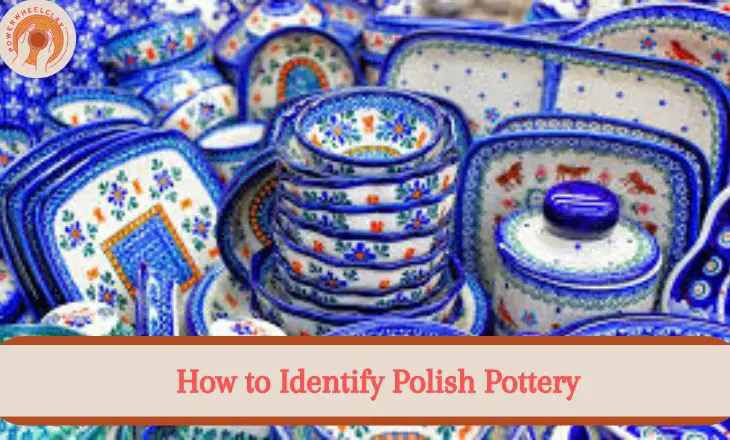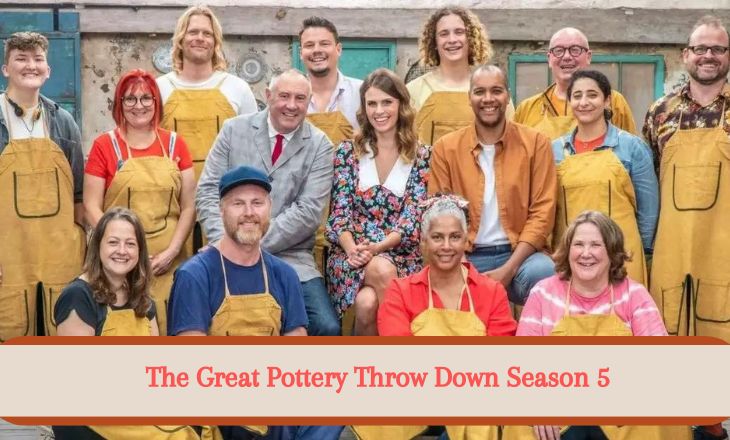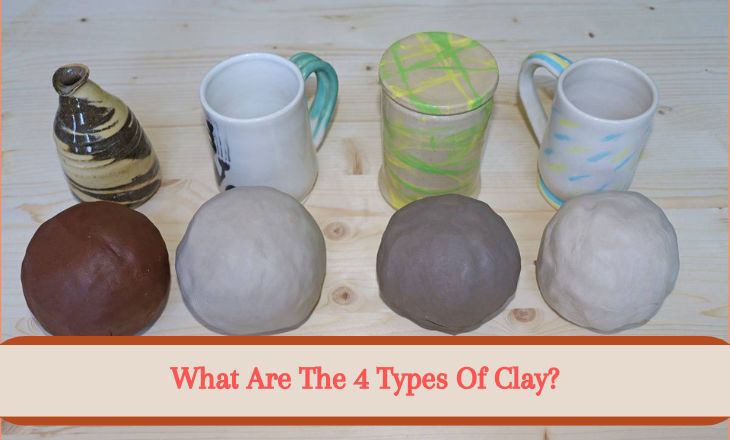How to Identify Polish Pottery – 3 Key Features
Polish Pottery, known for its vibrant colors and beautiful hand-painted designs, is a popular choice for kitchens and homes. To identify authentic Polish pottery, look for three key details: a stamp or marking on the bottom revealing the factory and possibly the artist, a smooth, almost velvety feel from hand-painting and glazing, and subtle imperfections like design variations or smudges.
These imperfections showcase the artisan’s touch, while a flawless piece might be a machine-made imitation. With this knowledge, you can confidently add a piece of Polish artistry to your collection.
An Overview of Polish Pottery
Polish pottery is carefully crafted by skilled artisans who pour their creativity and expertise into each piece. The intricate designs and vibrant colors are a testament to the dedication and passion of these craftsmen, resulting in truly unique and personalized pieces that stand out from the crowd.
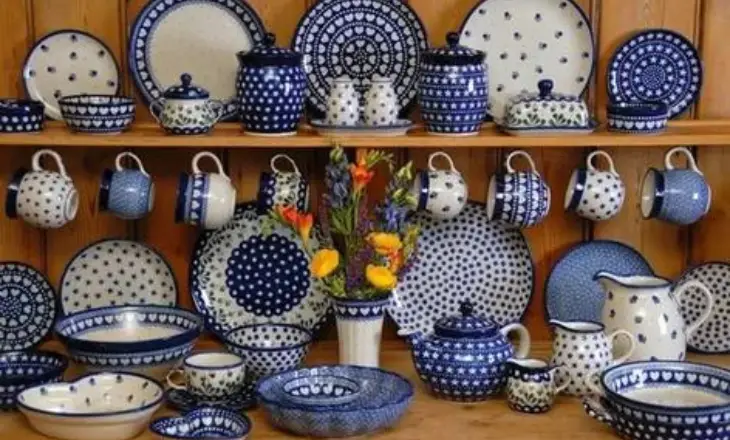
The traditional patterns used in Polish pottery are often passed down through generations, preserving a rich cultural heritage that adds depth and meaning to every piece. This connection to tradition lends an undeniable charm and authenticity to each item, making them not just objects for everyday use but also pieces of art with a story to tell.
Polish pottery stands as a shining example of individuality and craftsmanship, offering collectors and enthusiasts alike an opportunity to own something truly special and one-of-a-kind.
Boleslawiec Pottery Marks
Bolesławiec pottery, also known as Polish pottery, is beautiful stoneware made in Bolesławiec, Poland. Bolesławiec pottery, a treasured piece of Polish heritage, hails from the town of Bolesławiec in southwestern Poland. This beautiful stoneware boasts a rich history, dating back to the Middle Ages.
Identifying authentic Bolesławiec pottery marks can be done through a combination of markings on the piece itself. While there isn’t a single definitive marker, looking for several indicators can increase your confidence. The most common sign is the phrase “Handmade in Poland” stamped on the bottom.
How to Identify Polish Pottery
In the world of colorful ceramics, Polish pottery stands out for its vibrant hand-painted designs and enduring functionality. But with its popularity comes the challenge of identifying the real deal. Here’s a quick guide to spotting authentic Polish pottery, ensuring you bring home a genuine piece of Polish artistry.
Color
Polish pottery marks are identified by their intricate patterns and designs. Traditional Polish pottery often features floral motifs, geometric shapes, and intricate lace-like patterns known as ‘peacock eyes.’ These designs are meticulously hand-painted by skilled artisans using small brushes to create a unique and timeless look. Each pattern has its own story and symbolism, making every piece of Polish pottery truly special.

The quality of Polish pottery can also be determined by its weight and thickness. Authentic pieces are typically heavier due to the use of high-quality stoneware clay that is durable and resistant to chipping. The thickness of the pottery also adds to its durability, ensuring that it can withstand everyday use for years to come. By paying attention to these details, you can easily distinguish genuine Polish pottery from mass-produced imitations that lack the same craftsmanship and artisanal quality.
Markings
Polish pottery enthusiasts often overlook the importance of exploring the markings on each piece. These unique stamps and signatures authenticate the pottery and reveal stories of skilled artisans behind them. Pieces marked with UNIKAT hold a special charm as they bear witness to the artisan’s dedication and passion for their craft. Each stroke, pattern, and color blend in these pieces tell a tale of creativity and artistry that goes beyond mere functionality.
Patterns
The patterns play a very important role in identifying Polish pottery. Each piece of Polish pottery is hand-painted with unique designs created by the artist. The punch technique used by artists involves applying motifs soaked in paint onto the surface of the pottery. These motifs vary in shape and size, resulting in many beautiful patterns adorning each piece.
While there may be common themes among different pieces, they are all different due to the personalized touch of each artist. This dedication to handcraftsmanship and attention to detail truly sets Polish pottery apart from mass-produced ceramics, making it a distinctive addition to any collection or kitchenware set.
Traditional Vs. UNIKAT Polish Pottery
The distinction between traditional and UNIKAT Polish pottery goes beyond just the surface design; it extends to the craftsmanship and individuality of each piece. Traditional pottery, with its timeless peacock-inspired motifs, reflects a sense of heritage and continuity in Polish ceramic artistry.
UNIKAT pieces challenge conventions with their intricate and unpredictable patterns that push the boundaries of creativity. The detailed markings at the bottom of these vessels serve as a testament to the skill and personal touch of the artist behind each unique creation.
Traditional pottery embraces familiar designs that evoke nostalgia and cultural symbolism, UNIKAT pieces captivate collectors with their avant-garde approach to form and decoration. The distinction in markings not only helps differentiate between these categories but also highlights how both traditions honor individual artists’ contributions to the rich tapestry of Polish pottery-making.
Can You Identify Fake Polish Pottery?
When it comes to identifying fake Polish pottery, paying attention to the small details can make all the difference. Authentic Boleslawiec pottery is marked with the words Hand made in Poland on the bottom, a stamp that signifies quality and craftsmanship. These pieces also showcase the artisan’s unique touch through signatures, initials, or UNIKAT for one-of-a-kind items.
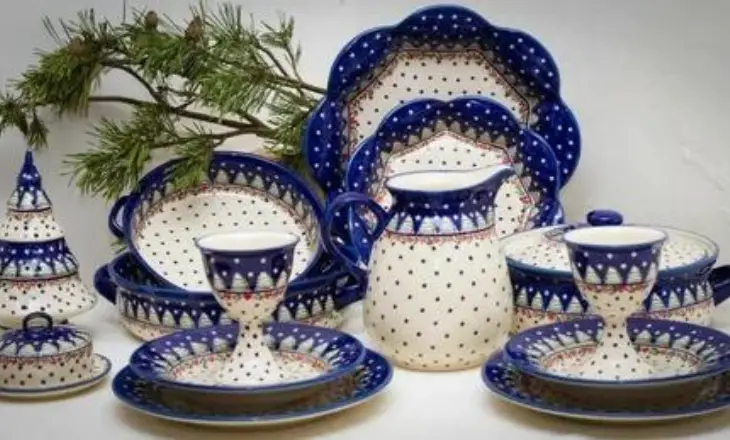
The absence of these key markers should raise red flags when determining whether a piece of pottery is genuine or not. Unmarked or unclear stamps may indicate a counterfeit product trying to pass as authentic Boleslawiec pottery. By recognizing these vital indicators of authenticity, collectors, and enthusiasts can confidently differentiate between real Polish pottery and imitations in their pursuit of genuine craftsmanship and artistry.
Conclusion
Distinguishing Polish pottery, particularly Boleslawiec pottery, can be a rewarding endeavor for both novices and experienced collectors alike. One can easily identify authentic Polish pottery pieces by paying attention to the distinct characteristics such as color, patterns, and markings – with a focus on peacock-themed designs. Look for the telltale signs like peacock eye or feather patterns, blue designs on cream-white backgrounds, and the stamp Hand made in Poland to confirm the authenticity of the pottery. With a keen eye and some knowledge of these key features, you can confidently differentiate Polish pottery from other types with ease.
FAQ’s
What is the most famous Polish Pottery?
The Boleslawiec pottery that is most recognizable today is the white or cream-colored ceramic with dark blue, green, yellow, brown, and sometimes red or purple motifs.
How old is Polish Pottery?
It is thought that crude pottery making in the Silesian region may have taken place as early as the 7th century. According to the Muzeum Ceramika in Bolesławiec, Poland, the first historical record of a ceramic artist comes from the town of Swidnica’s municipal books in the year 1380.
What is special about Polish Pottery?
Polish pottery is also known as Bolesławiec pottery, is known for its vibrant colors and intricate designs. Each piece of pottery is carefully handcrafted by skilled artisans in Bolesławiec, Poland, using a special type of clay that is fired at high temperatures to create a durable and long-lasting product.
what is antique Polish Pottery?
Antique Polish pottery refers specifically to Bolesławiec pottery pieces that are considered quite old. It likely refers to pieces made before the mid-20th century.
